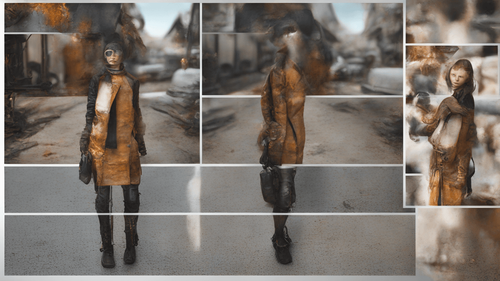
Introduction
In the ever-evolving landscape of image processing and enhancement, the RCAN super resolution technique stands out as a game-changer. With its ability to transform low-resolution images into stunningly detailed high-resolution versions, RCAN (Residual Channel Attention Networks) is redefining image clarity and quality. This article delves into the ins and outs of RCAN super resolution, its significance, applications, and how it's reshaping industries that rely on visual data.
RCAN Super Resolution: A Technological Marvel
At its core, RCAN super resolution is a deep learning-based approach designed to tackle the age-old challenge of upscaling low-resolution images while preserving intricate details. Unlike traditional methods that often result in blurry or artificial-looking images, RCAN leverages advanced neural networks to enhance images with astounding realism and accuracy.
How RCAN Super Resolution Works
RCAN operates by leveraging residual blocks, which enable the network to learn the difference between the low-resolution and high-resolution image pairs. These residual blocks are combined with channel attention mechanisms, which focus on specific image features crucial for reconstruction. This unique fusion of residual learning and channel attention empowers RCAN to produce images that are not only sharper but also maintain the authenticity of the original scene.
The Benefits of RCAN Super Resolution
Unparalleled Image Clarity and Detail
RCAN's standout feature lies in its ability to uncover intricate details that might be missed by the naked eye. Whether it's enhancing the texture of fabric in fashion photography or revealing fine architectural nuances, RCAN elevates image clarity to an unprecedented level.
Natural Textures and Realism
Unlike traditional upscaling techniques that often result in artificial textures and distortions, RCAN excels in preserving the natural appearance of objects. This is particularly valuable in fields such as medical imaging, where accurate representation is crucial for diagnosis and treatment planning.
Enhanced Visual Data Analysis
Industries that heavily rely on visual data, such as satellite imagery, surveillance, and autonomous vehicles, benefit immensely from RCAN super resolution. The technology aids in extracting vital information from images, even from a distance, enabling better decision-making and analysis.
Applications of RCAN Super Resolution
Medical Imaging Advancements
In the medical realm, RCAN super resolution holds immense potential. From enhancing microscopic cellular images to improving the clarity of MRI scans, medical professionals can make more accurate diagnoses and develop targeted treatment plans.
Art Restoration and Archiving
The world of art preservation is also embracing RCAN. By restoring aged or damaged artworks to their original glory, museums and galleries can ensure that these cultural treasures remain accessible to future generations.
Satellite Imaging for Environmental Monitoring
Satellite imagery has become a cornerstone of environmental monitoring. With RCAN super resolution, scientists can zoom in on specific areas of interest, track changes in landscapes, and gather critical data for climate and conservation studies.
Cinematic and Gaming Visuals
RCAN is making its mark in the entertainment industry too. Cinematographers and game developers can use this technology to render lifelike scenes with breathtaking realism, enhancing the immersive experience for viewers and gamers.
FAQs About RCAN Super Resolution
How does RCAN differ from traditional upscaling methods?
RCAN utilizes residual learning and channel attention mechanisms, allowing it to enhance images while maintaining authenticity, unlike traditional methods that often result in blurry or artificial images.
Is RCAN suitable for real-time image enhancement?
Yes, RCAN is capable of real-time image enhancement, making it a versatile tool for applications that require on-the-fly improvements in image quality.
Can RCAN be applied to video processing?
Absolutely. RCAN's capabilities extend to video processing, offering the potential to enhance video footage and maintain consistency across frames.
Does RCAN work well on all types of images?
RCAN demonstrates impressive performance across a wide range of images, including natural scenes, medical imagery, and even artistic works.
What kind of hardware is required to implement RCAN?
RCAN can be implemented on a variety of hardware setups, from standard CPUs to powerful GPUs, depending on the complexity and scale of the task.
Are there any limitations to RCAN super resolution?
While RCAN is highly effective, it may face challenges when dealing with extremely low-quality input images or scenes with heavy noise. However, ongoing research aims to address these limitations and further enhance its capabilities.
Conclusion
In the world of image processing and enhancement, RCAN super resolution emerges as a shining example of innovation and practicality. Its ability to breathe life into low-resolution images, uncovering hidden details and maintaining authenticity, has broad implications across industries. From medicine to art, from surveillance to entertainment, RCAN is transforming the way we perceive and interact with visual data. As technology continues to advance, it's exciting to envision how RCAN will evolve and reshape our visual experiences in the years to come.
Remember, the power of RCAN super resolution lies not only in its technological prowess but also in its potential to amplify our understanding and appreciation of the visual world around us. With RCAN, the future of image enhancement is brighter and clearer than ever before.